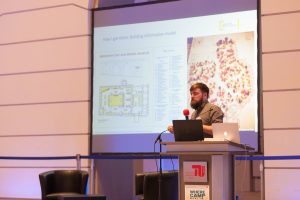Cologne Intelligence Mobile Minds GmbH

Over the last couple of years, a variety of solutions for realizing augmented user interfaces on mobile devices has evolved. Beginning with mobile augmented reality frameworks like Metaio, Vuforia or Wikitude technology has evolved to Tango devices with extra hardware components and back to purely software driven solutions like ARCore and arKit. Tango (formerly known as „Project Tango“) by the Google Advanced Technology and Projects team introduced a hardware component for a next generation of android smartphones, that claims new use cases by the use of additional sensors, multiple cameras and a powerful software library. The consequences of Tango as an enabling technology are more evolved software only solutions like ARCore, that bring a similar precision to everyone’s phone, no extra hardware needed. As the physical environment of the device gets quantifiable with centimeter grade precision, the augmentations can be presented at a real location in reality’s three-dimensional space and truly embed into their surroundings. The manifold new possibilities are illustrated using the use case of indoor navigation. Indoor Positioning with a with a precision improved by multiple magnitudes, as well as Tango’s area learning and ARCore’s environment understanding features, offer an innovative alternative to existing indoor navigation solutions and makes their infrastructural preconditions (iBeacon grids, Wi-Fi) obsolete. On the long run services like the Visual Positioning Service (VPS) announced by Google could be the successor of the everyday present Global Positioning Service (GPS). The session illustrates these developments with the example of a classic two-dimensional indoor map navigation and an augmented reality user interface, where routes embed more seamlessly into reality. While the use case of augmented reality is not limited to indoor navigation, it helps to get a good understanding of the differences between Tango’s and ARCore’s capabilities and their implications for the future of mobile augmented reality and indoor positioning technology on a global scale.